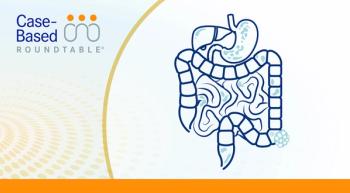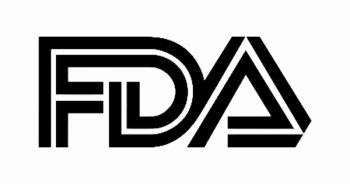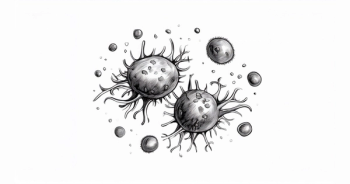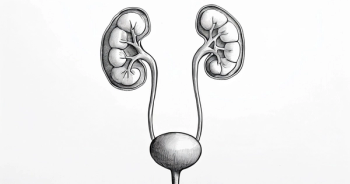
Targeted Therapies in Oncology
- June I 2025
- Volume 14
- Issue 7
- Pages: 71
Exploring the Treatment Landscape in Chronic GVHD
Explore the complexities of chronic GVHD symptoms, assessment, and innovative treatment strategies, including ruxolitinib and emerging therapies.
Targeted Therapies in Oncology: Please provide an overview of GVHD symptoms/presentation and how GVHD is assessed. What is your initial approach to therapy, and what immediate or long-term factors do you consider when making your initial treatment decisions?
Nelson Chao, MD, MBA: Chronic GVHD is historically described as symptoms that continue after day 100. It’s clear that we don’t use the time criteria anymore. It really is a diagnosis that is based on symptoms rather than time. These symptoms include poikiloderma, sclerosis, bronchiolitis obliterans with a lung biopsy, esophageal web restrictor, oral lichen changes, vaginosis, and fasciitis. In this case, the patient clearly had poikiloderma with sclerosis.
There are other findings that are distinctive that are not found in acute GVHD, but they are not sufficient for the diagnosis; these include sickle cell syndrome, nail dystrophy myositis, and bronchiolitis obliterans without a biopsy. Other findings that support chronic GVHD if the diagnosis is confirmed are serositis, thrombocytopenia, and dyspigmentation.
This is a patient who clearly had symptoms of chronic GVHD and the initial dose at 0.5 mg/kg was a standard approach for these patients. The only thing that I might have done differently would be to prescribe topical steroids for this patient or even topical tacrolimus to try to improve the skin involvement and try to spare steroids.
Could you expand on the steroid approach? What are your overall thoughts on the dosing for the patient?
The steroid dose, as I mentioned, is a standard approach. I think this is quite appropriate for this patient. But what needs to be considered is that chronic GVHD in and of itself is immunosuppressive. And so there is a GVHD effect. You have to be careful with the risk of infection, and that probably is one of the major issues in chronic GVHD that is sometimes forgotten. Almost all these patients do need coverage for encapsulated organisms. Many patients who have clear evidence of chronic GVHD should be on penicillin prophylaxis, and in the case of neutropenia, should also obviously have broader coverage, because they are going to be immunosuppressed from the disease. But you do need to be careful with infection. Prophylaxis is important, as well as antifungal prophylaxis, especially at the higher doses of steroids.
Now, this is a patient whom we could not taper. And while the disease was relatively controlled on the steroids every time, the steroids were taken by a patient who would flare, and that’s an indication to add a second agent. In this case, the standard of care would be to add ruxolitinib.
How do you determine a treatment approach? Please discuss some of the efficacy and safety data from REACH3 (NCT03112603), especially the 3-year data.1
Ruxolitinib is the drug of choice after steroid failure. This is based on the initial data. It was a phase 3 prospective or randomized trial, using ruxolitinib in 1 arm vs the best alternative therapy in the other arm, and that study clearly showed a significant improvement with ruxolitinib compared with the best alternative therapy in the REACH3 trial.
The final analysis of this trial shows that the median failure-free survival with ruxolitinib was 38.4 months compared with the best alternative therapy, which was only 5.7 months (HR, 0.361; 95% CI, 0.268-0.485). There was clearly a much, much better outcome using ruxolitinib. Further, the duration of response with ruxolitinib was not reached compared with just 6.4 months in the best alternative therapy arm.
The impressive part of these data was that the patients on the best alternative therapy were allowed to cross over to ruxolitinib after their failure, and that group that crossed over essentially had the same response as the initial group that got ruxolitinib. That clearly shows that this is a drug that is quite active in this disease, both in the failure-free survival as well as duration of response. Those benefits are significantly better compared with the control group. Even before these data, most of our practice has really accepted and has embraced ruxolitinib in the second line after steroid failure.
As this patient has been on steroids and then received ruxolitinib therapy, what would be the key signs to monitor? How does the knowledge of potential infection risk change? How does this affect your treatment approach or treatment strategy?
There are challenges with ruxolitinib. It’s not a drug that has no adverse events so you have to be aware that a few of the key toxicities associated with ruxolitinib are anemia, thrombocytopenia, and immune inhibition of the immune system.
It’s one of those drugs that require you to walk a tightrope. Because, as I said earlier, chronic GVHD in and of itself is immunosuppressive. Now, you’re going to add another immunosuppressive drug to treat that. Obviously, if the treatment is successful that immune adverse event goes away. The clinical signs to monitor carefully are the counts, blood count and platelet count. Primarily, as you know, patients with significant chronic GVHD may be thrombocytopenic to start with.
By prescribing ruxolitinib, you have to be aware that the patient’s plate count may drop further before it gets better, because their disease has responded. Sometimes you have to dose response or dose attenuate from 10 mg twice a day to 5 mg twice a day, or sometimes 5 mg once a day. In certain cases, you might want to transfuse platelets during this period while you wait to see whether they respond.
The other big challenge is infection. As I mentioned earlier, steroids can cause infections, and ruxolitinib is one of these drugs that can immunosuppress the host. You have to be careful about infectious complications. So Pneumocystis jirovecii pneumonia prophylaxis is important. In addition, antifungal prophylaxis is important. Most of the time, neutrophil counts are not affected, but there are patients who will have neutropenia from ruxolitinib as well. In those cases, you have to worry about bacterial infections.
It doesn’t really change how you want to treat these patients because you have to treat the underlying disease and hope that the underlying disease, chronic GVHD, gets better. A lot of these toxicities are mitigated because the patient is improving. You do have to dose-attenuate sometimes. Obviously, if the plate count drops into the 2030 range, you want to drop the dose of ruxolitinib, or you want to hold it for a while and let the patient recover.
What’s your approach to patient education when you are treating these patients? Please share some strategies on how clinicians can keep patients informed about their disease response.
Communication with the patient is obviously critical. Besides the clinical symptoms, the patient’s quality of life is also important. The extent of fibrosis, or the shortness of breath, or the gastrointestinal toxicities, have a huge impact on their quality of life. It is important to keep tabs on what their physical function is and what their social well-being is.
Besides just looking at their current GVHD-specific symptoms, it’s important to screen for psychological distress, for depression, for anxiety. It’s important to let the patient know that they’re improving. And if they’re not improving, that there are other potential things that could be done to help them.
It’s also important to have a multidisciplinary approach because it’s not just the particular organs. It’s to have a holistic view of the patient. Keep an eye on things like dental care or oral care, or for patients with vascular stenosis to consider esophageal bougienage. All these become part of nutritional support if they have problems keeping their weight. All this becomes very important for the well-being of the patient.
What are the treatment options if the patient isn’t a candidate for ruxolitinib?
The standard approach for chronic GVHD is steroids. The second is ruxolitinib. After that, there is belumosudil (Rezurock), which was the second drug to market that had phase 2 data from KD025-213 (NCT03640481).2
The first drug approved for chronic GVHD was ibrutinib (Imbruvica), but that was approved based on Study PCYC1129-CA (NCT02195869), which evaluated 42 patients.3 Those data were reasonably robust. I think it’s a drug that is more difficult to use than some of these other drugs, primarily because of the gastrointestinal toxicity that ibrutinib can cause. For most of us, the approach has been steroids, followed by ruxolitinib and after that is belumosudil.
There’s another drug that was just recently approved, which is axatilimab-csfr (Niktimvo), a colony-stimulating factor-1 receptor-blocking antibody.4 This agent seems to be specifically good at targeting sclerosis, which is interesting, and that’s just become available. And lastly, there is extracorporeal photopheresis, which involves collecting white blood cells, mixing them with a photosensitizing agent, and then exposing them to ultraviolet light to destroy the cells that are causing GVHD before reinfusing them back into the patient.
This is an option for clinicians who have access to it. It has been used for many decades with reasonably good outcomes in many centers, although there has not been a good phase 3 trial demonstrating efficacy across the board.
Do you have any clinical pearls that you can share with the community?
I think that the most important pearl that I would leave for community oncologists is to be in close contact with a transplant center. The transplant center is very invested in these patients, as you can imagine, and would be very happy to participate in the care of these patients. I think frequent calls, frequent touching base with the transplant physicians would be most welcome.
REFERENCES:
1. Zeiser R, Polverelli N, Ram R, et al; REACH3 Investigators. Ruxolitinib for glucocorticoid-refractory chronic graft-versus-host disease. N Engl J Med. 2021;385(3):228-238. doi:10.1056/NEJMoa2033122
2. FDA approves belumosudil for chronic graft-versus-host disease. FDA. February 1, 2022. Accessed May 7, 2025. https://tinyurl.com/ystb8d8e
3. FDA expands ibrutinib indications to chronic GVHD. FDA. August 2, 2017. Accessed May 7, 2025. https://tinyurl.com/4t62evp
4. FDA approves axatilimab-csfr for chronic graft-versus-host disease. FDA. August 14, 2024. Accessed May 7, 2025. https://tinyurl.com/muk6yebn
Articles in this issue
6 months ago
Nine Staff Management Essentials for Physicians







































